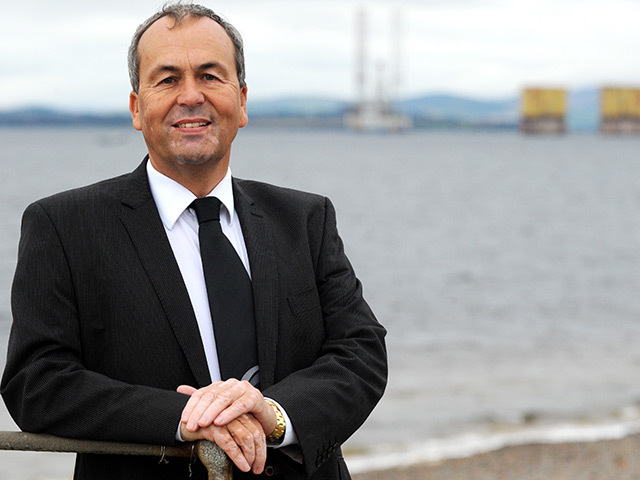
The best ways to improve energy security, mitigate global warming and reduce the number of deaths caused by air pollution are blowing in the wind and rippling in the water.
They are not growing on prairies or glowing inside nuclear power plants, says Mark Z. Jacobson, a professor of civil and environmental engineering at Stanford University, in the US.
And “clean coal,” which involves capturing carbon emissions and sequestering them in the earth, is not clean at all, he claims.
Jacobson has conducted what is apparently the first quantitative scientific evaluation of the proposed major energy-related solutions by assessing not only their potential for delivering energy for electricity and vehicles, but also their impacts on global warming, human health, energy security, water supply, space requirements, wildlife, water pollution, reliability and sustainability.
His findings indicate that the options that are getting most attention are between 25 and 1,000 times more polluting than the best available options.
“The energy alternatives that are good are not the ones that people have been talking about the most. And some options that have been proposed are just downright awful,” Jacobson said.
“Ethanol-based biofuels will actually cause more harm to human health, wildlife, water supply and land use than current fossil fuels.”
Jacobson believes that ethanol may also emit more global-warming pollutants than fossil fuels, according to the latest scientific studies.
The raw energy sources that Jacobson found to be the most promising are, in order:
Wind.
Concentrated solar (the use of mirrors to heat a fluid).
Geothermal.
Tidal.
Solar photovoltaics (rooftop solar panels).
Wave and hydroelectric.
He recommends against nuclear, coal with carbon capture and sequestration, corn ethanol and cellulosic ethanol.
To place the various alternatives on an equal footing, the Stanford professor first made his comparisons among the energy sources by calculating the impacts as if each alternative alone were used to power all the vehicles in the US, assuming only “new-technology” vehicles were being used.
Such vehicles include battery electric vehicles (BEVs), hydrogen fuel-cell vehicles (HFCVs) and “flex-fuel” vehicles that could run on a high blend of ethanol called E85.
Energy presumes that, by the same token, broadly similar results would be achievable in Europe, though cars are significantly smaller on average.
Wind was by far the most promising and Jacobson calculated that a battery-powered US vehicle fleet could be charged by 73,000-144,000 five-megawatt wind turbines, fewer than the 300,000 aircraft the Americans produced during World War II and far easier to build. Additional turbines could provide electricity for other energy needs.
The overall footprint in terms of land area was also found to be modest.
“There is a lot of talk among politicians that we need a massive jobs programme to pull the economy out of the current recession,” Jacobson said.
“Well, putting people to work building wind turbines, solar plants, geothermal plants, electric vehicles and transmission lines would not only create jobs but would also reduce costs due to healthcare, crop damage and climate damage from current vehicle and electric power pollution, as well as provide the world with a truly unlimited supply of clean power.”
Jacobson said that, while some people were under the impression that wind and wave power were too variable to provide steady amounts of electricity, his research group had already shown in previous research that, by properly co-ordinating the energy output from wind farms in different locations, the potential problem with variability could be overcome and a steady supply of baseline power delivered to users.
Jacobson’s research is particularly timely in light of the growing push to develop biofuels, which he calculated to be the worst of the available alternatives.
“That is exactly the wrong place to be spending our money. Biofuels are the most damaging choice we could make in our efforts to move away from using fossil fuels,” Jacobson said.
“We should be spending to promote energy technologies that cause significant reductions in carbon emissions and air-pollution mortality, not technologies that have either marginal benefits or no benefits at all.
“Obviously, wind alone isn’t the solution.
“It’s got to be a package deal, with energy also being produced by other sources such as solar, tidal, wave and geothermal power.”
Politicians on both sides of the Atlantic have been touting nuclear power and clean coal as energy solutions that should be pursued, but nuclear power and coal with carbon capture and sequestration were Jacobson’s lowest-ranked choices after biofuels.
“Coal with carbon sequestration emits 60-110 times more carbon and air pollution than wind energy, and nuclear emits about 25 times more carbon and air pollution than wind energy,” Jacobson said.
“Although carbon-capture equipment reduces 85-90% of the carbon exhaust from a coal-fired power plant, it has no impact on the carbon resulting from the mining or transport of the coal or on the exhaust of other air pollutants.
“In fact, because carbon capture requires a roughly 25% increase in energy from the coal plant, about 25% more coal is needed, increasing mountaintop removal and increasing non-carbon air pollution from power plants.”
Nuclear power poses other risks. Jacobson said it was likely that if the US were to move more heavily into nuclear power, other nations would demand to be able to use that option.
Finally, both coal and nuclear energy plants take much longer to plan, permit and construct than do most of the other new energy sources that Jacobson’s study recommends.
The result would be even more emissions from existing nuclear and coal power sources as people continued to use comparatively “dirty” electricity while waiting for the new energy sources to come online, he added.
According to Stamford, Jacobson received no funding from any interest group, company or government agency. His findings are published in Energy and Environmental Science.
Recommended for you
